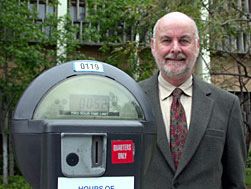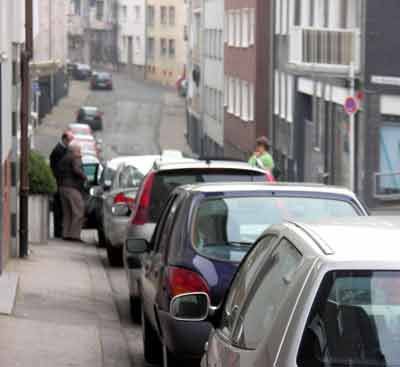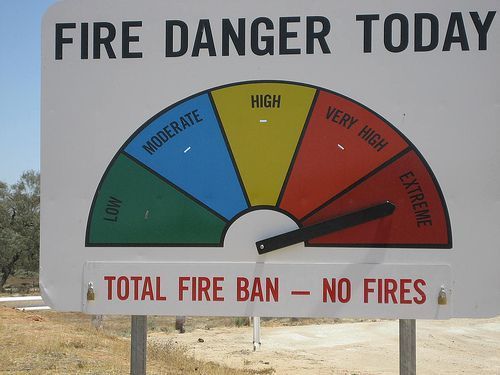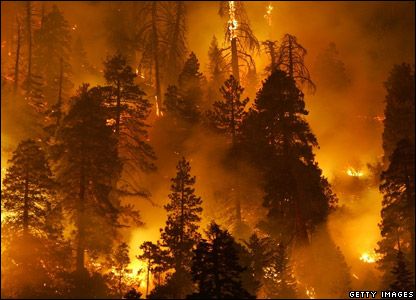 Compared to other states, Californians are only moderately vulnerable to changes in the cost of oil, but we’re leading the list in taking steps to reduce our use of gasoline.
Compared to other states, Californians are only moderately vulnerable to changes in the cost of oil, but we’re leading the list in taking steps to reduce our use of gasoline.
{mp3remote}http://media.krcb.org/audio/nbr/8-12-09.mp3{/mp3remote
You can read the full 21-page report here, or a two-page summary here.
Percent of Income Spent on Gasoline by the Average Driver, 2008

important way to reduce oil vulnerability is by adopting public policies to reduce across the board consumption of fossil fuels. Deron Lovass, the Natural Resource Defense Council’s Transportation Policy Director, says those policies tend to fall in one of three general areas.
{mp3remote}http://media.krcb.org/audio/nbr/newpolicies.mp3{/mp3remote}
Oil Vulnerability Rankings by State 2008
| Rank | State | Percent of Income | Dollar Amount |
|---|---|---|---|
| 1 | Mississippi | 9.14% | $2702.00 |
| 2 | Montana | 8.07% | $2762.94 |
| 3 | South Carolina | 7.59% | $2419.61 |
| 4 | Oklahoma | 7.50% | $2766.65 |
| 5 | Louisiana | 7.00% | $2540.66 |
| 6 | Kentucky | 6.84% | $2178.30 |
| 7 | Texas | 6.80% | $2622.05 |
| 8 | New Mexico | 6.79% | $2177.51 |
| 9 | Georgia | 6.71% | $2278.92 |
| 10 | Arkansas | 6.68% | $2089.00 |
| 11 | Utah | 6.61% | $2002.07 |
| 12 | Indiana | 6.44% | $2195.73 |
| 13 | Maine | 6.36% | $2250.80 |
| 14 | Tennessee | 6.25% | $2146.47 |
| 15 | Idaho | 6.20% | $1991.41 |
| 16 | Missouri | 5.94% | $2091.62 |
| 17 | South Dakota | 5.93% | $2216.13 |
| 18 | North Carolina | 5.93% | $2041.98 |
| 19 | Kansas | 5.86% | $2226.64 |
| 20 | Alabama | 5.68% | $1911.72 |
| 21 | Arizona | 5.65% | $1863.13 |
| 22 | North Dakota | 5.64% | $2217.39 |
| 23 | West Virginia | 5.62% | $1733.11 |
| 24 | Michigan | 5.58% | $1971.02 |
| 25 | Minnesota | 5.50% | $2353.87 |
| 26 | Ohio | 5.50% | $1951.67 |
| 27 | Rhode Island | 5.40% | $2214.95 |
| 28 | Delaware | 5.37% | $2195.27 |
| 29 | Wyoming | 5.36% | $2662.83 |
| 30 | Iowa | 5.25% | $1924.73 |
| 31 | Hawaii | 5.19% | $2101.98 |
| 32 | Wisconsin | 5.18% | $1931.33 |
| 33 | California | 5.16% | $2202.09 |
| 34 | Virginia | 5.14% | $2205.13 |
| 35 | Oregon | 4.91% | $1764.68 |
| 36 | Illinois | 4.78% | $2027.43 |
| 37 | Nebraska | 4.69% | $1769.97 |
| 38 | Nevada | 4.66% | $1880.38 |
| 39 | Vermont | 4.66% | $1810.06 |
| 40 | Florida | 4.65% | $1817.84 |
| 41 | Pennsylvania | 4.56% | $1836.94 |
| 42 | New Jersey | 4.49% | $2286.44 |
| 43 | Washington | 4.43% | $1875.42 |
| 44 | Alaska | 4.33% | $1874.92 |
| 45 | Colorado | 4.29% | $1817.47 |
| 46 | New Hampshire | 4.21% | $1802.59 |
| 47 | Maryland | 4.19% | $2015.49 |
| 48 | Massachusetts | 3.66% | $1856.18 |
| 49 | New York | 3.44% | $1654.17 |
| 50 | Connecticut | 3.24% | $1824.58 |
 A dispute over funding for a new Death Row at San Quentin is just one of the subtexts in the latest legislative showdown over the state’s budget.
A dispute over funding for a new Death Row at San Quentin is just one of the subtexts in the latest legislative showdown over the state’s budget.
{mp3remote}http://media.krcb.org/audio/nbr/8-11-09.mp3{/mp3remote}

The existing death row cellblock is shown in the photo on the right, while the entire prison is seen from the air, below.

Assemblyman Jared Huffman (D-San Rafael) suggests that the renewed debate over funding for the construction of a new Death Row at San Quentin should be an opportunity for the state to also revisit the larger question of capital punishment in California.{mp3remote}http://media.krcb.org/audio/nbr/penalty.mp3{/mp3remote}

State Senator Jeff Denham (left) and Assembly Jared Huffman (right) at news conference in front of San Quentin State Prison last spring at which they articulated their opposition to the new Death Row proposal.

If convenient parking is hard to find, it’s not because demand exceeds supply, says UCLA professor Donald Shoup, but because the available supply is being sold too cheap.
{mp3remote}http://media.krcb.org/audio/nbr/8-10-09.mp3{/mp3remote}
 Most automobiles sit parked and unused 95% of the time, says UCLA professor Donald Shoup (right). The inappropriately low cost of onstreet parking encourages wasteful and inefficient cruising for curbside parking, he argued in this essay from the New York Times.
Most automobiles sit parked and unused 95% of the time, says UCLA professor Donald Shoup (right). The inappropriately low cost of onstreet parking encourages wasteful and inefficient cruising for curbside parking, he argued in this essay from the New York Times.
Dr. Shoup will present his research on parking to an open workshop in the Santa Rosa City Council chambers on August 11 at 2 pm. Details about that free public event can be found here.
In high density residential neighborhoods, such as much of San Francisco, that can squeeze out any opportunity for visitors to find a space. But here, too, he argues, placing a higher price on the curbside spaces, is the simplest way to change that dynamic.
{mp3remote}http://media.krcb.org/audio/nbr/sf.mp3{/mp3remote}
 In some cases, charging what the market will bear for streetside parking can be implemented one neighborhood at a time. But Shoup says the residents of those areas must be able to see how they will benefit from the change before they will accept it.
In some cases, charging what the market will bear for streetside parking can be implemented one neighborhood at a time. But Shoup says the residents of those areas must be able to see how they will benefit from the change before they will accept it.
{mp3remote}http://media.krcb.org/audio/nbr/benefits.mp3{/mp3remote}
Shoup explains how to monitize and manage onstreet parking in greater detail in this article from (who knew there was such a magazine?) Parking Today. But the biggest single change he'd like to see is the elimination of the commonplace civic requirement that all new construction include a predetermined number of parking places.
{mp3remote}http://media.krcb.org/audio/nbr/requirements.mp3{/mp3remote}
 Another drought-fueled fire season is underway across northern California, when any passing storms are more likely to bring blaze-sparking lightning strikes than enough rain to ease the danger.
Another drought-fueled fire season is underway across northern California, when any passing storms are more likely to bring blaze-sparking lightning strikes than enough rain to ease the danger.
{mp3remote}http://media.krcb.org/audio/nbr/8-7-09.mp3{/mp3remote}
 CalFire maintains a frequently updated online map of all active fire incidents throughout the state, and you can see it here.
CalFire maintains a frequently updated online map of all active fire incidents throughout the state, and you can see it here.

California’s annual Campaign Against Marijuana Planting is underway again, and so is the debate over its effectiveness.
{mp3remote}http://media.krcb.org/audio/nbr/8-6-09.mp3{/mp3remote}
The photograph above was taken at a CAMP raid in Shasta County, which has become the county where the state marijuana eradication program is now most active. Sonoma County ranks sixth.

CAMP is a project of the California Attorney General's Bureau of Narcotics Enforcement. Spokeswoman Michelle Gregory says an increasing number of the pot growing operations they find are in hard-to-reach areas of the state. But not all of them.
{mp3remote}http://media.krcb.org/audio/nbr/wheregrow.mp3{/mp3remote}

Aaron Smith is the California Policy Director for the national Marijuana Policy Project. He says the state’s aggressive attempts to reduce marijuana growing have actually contributed to the spread of new and better financed farms into remote public lands in California.
{mp3remote}http://media.krcb.org/audio/nbr/enforcement.mp3{/mp3remote}
Marijuana advocates have for years claimed that pot is California's biggest crop, and now cite govenment figures to support that claim. CAMP spokeswoman Gregory affirmed that much of California's cannabis is exported to other states. Surprisingly, Tennessee is reportedly the second leading pot producing state, far behind California.
The two tables below, as well as the graph above, are taken from the CAMP website.


Below, some of the marijuana plants shown in the earlier picture are loaded onto trucks to be taken away and destroyed. Photographs from the San Francisco Chronicle.


 Live Radio
Live Radio